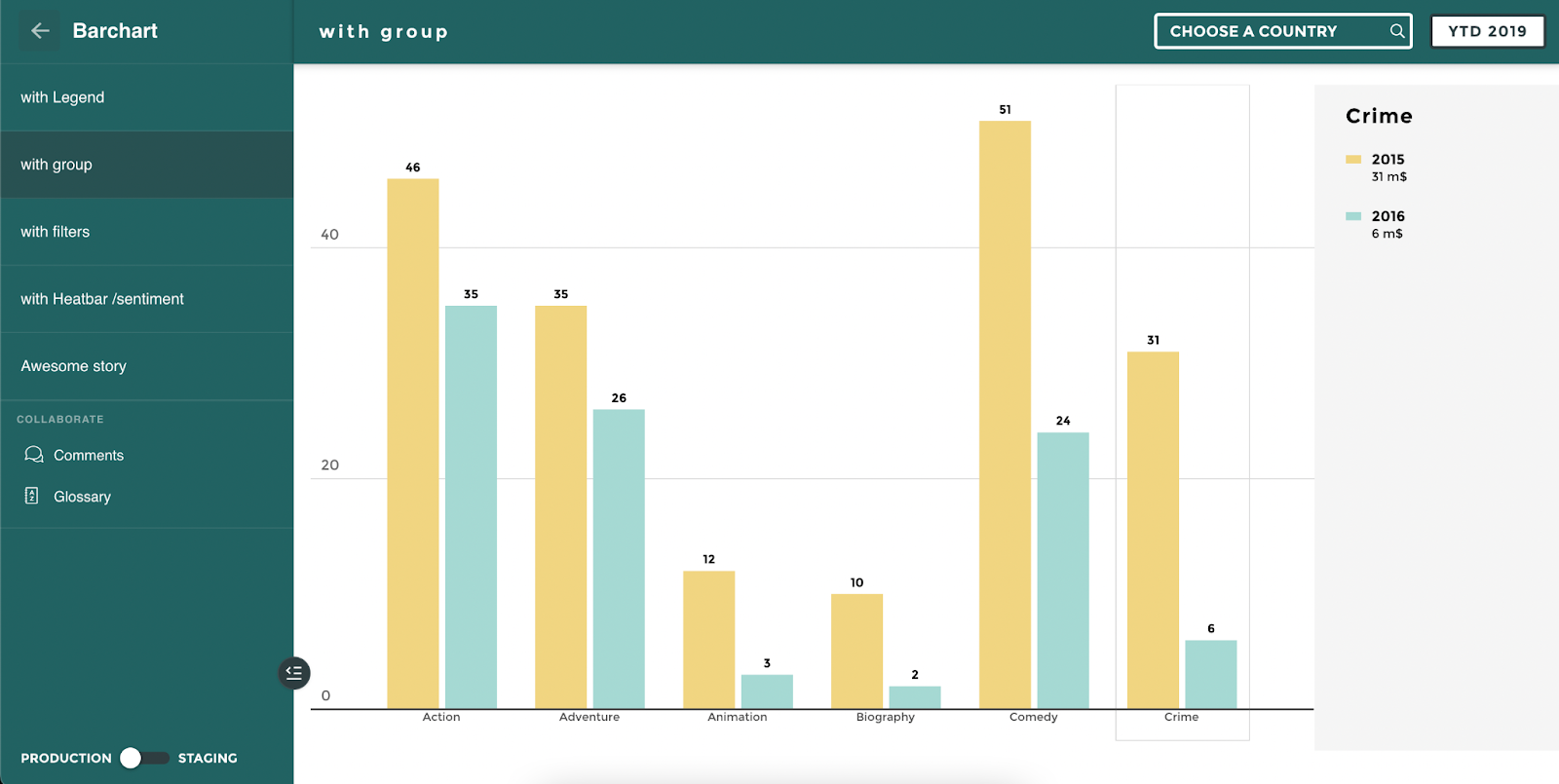We are living in a golden age for data science. Most companies have understood that they need to invest in data to become more efficient and to stay relevant and competitive in an increasingly demanding market. And it’s true that analytics spendings have exploded in the last few years ($274 billion in 2021). Most decision-makers are equipped with powerful tools that could analyze their market data, identify structuring trends and make predictions and recommendations.
Are these changes reflected at all levels of a company? That’s another question. Employees are having a hard time turning to data to make their day-to-day decisions. And why? They lack the tools to make data intelligible. Toucan Toco has surveyed more than 600 digital professionals: one in two felt that they did not have simple enough tools to make data accessible.
The data is right there, but people are not using it. We call this problem "the last mile" problem.
What's a "last mile" probleM, exactly?
The term "last mile" is common in business. It's a widespread problem that can affect a variety of industries. It arises when the last step in a process of delivering goods and services is the most expensive or difficult. It's easy to set up global infrastructure, but difficult to get it to the right person, at the right place.
A technical problem for telecommunication companies
The term "last mile" comes from the industry of telecom.
While trying to connect their general infrastructure to the homes of each of their customers, telecom companies have discovered what marathon runners have always known: the last leg of the race is often the hardest. The same companies that had successfully built "trunks" with high bandwidth realized that it would be more difficult and expensive than expected to get the branches of those trunks to each of their users' homes. The smaller branches have less bandwidth and limit the speed of the network. This is the the "last mile" problem. A technical problem, first and foremost.
A logistical problem for distribution companies
E-commerce and distribution companies use the term "last mile" to describe an obstacle of a completely different nature: logistics. And it’s a problem that might arise even if you’re a logistics pro, like Amazon. Despite their flawless supply chains and their finely tuned warehouses, they cannot achieve economies of scale in the last delivery segment.
E-commerce companies have to adapt to everyone's needs: deliver the right package to the right address at the right time. And they have to do it while keeping their customers satisfied. The last segment of delivery is therefore the most expensive from a financial and ecological point of view. A logistical problem that could be solved with advances in the transport sector, for example.

What does it have to do with data?
This has seemingly nothing to do with the world of data. Theoretically, information can be distributed everywhere with a simple click. However, in its own way, the data world is also facing the problem of the last mile. It's not a technical or logistical problem, but it has to do with users: the potential users of data analytics are all different. They have varying degrees of expertise in the field. Their habits vary widely: from the salesperson who is always on the road and checks their mobile phone more than their computer, to the marketing director who spends eight hours a day in the office. The challenge for analytics platforms is to become accessible enough to all these potential users so that everyone, no matter who they are, can benefit from the data.
Why adoption is the last mile of data
Enabling everyone to use and benefit from data: this challenge, in the tech world, is also called adoption. The adoption rate of a technology or tool is the number of people who actually use it once it is implemented. And this rate has data experts in a frenzy: 30% on average.
You can set up complex analyses and powerful tools, pay data scientists to do advanced predictive studies, but if no one uses them on a daily basis, then the ROI of all these initiatives is zero. Simply put: data does not make you more efficient or more relevant if people don’t look it up. Just as a telecom infrastructure is useless if end users don't have access to it from home, data efforts won't pay off if everyone doesn't make a habit of looking at the data before making decisions. This is why it’s so crucial to solve the last mile problem.
Companies are stepping up initiatives to encourage their employees to be more data-driven and promote a data culture in their company. And the experts know what works: making data easier to use.
Guided Business Analytics: Helping you cross the finish line
What if the problem came from the tools themselves? We've said it before: digital professionals think tools are crucial to their work, but they still find them too complicated. To counter that, next-generation business analytics platforms focus on the user experience. The user should never feel lost in front of a sea of indigestible data, on the contrary. They should feel that they are being taken by the hand, accompanied to better understand their data.
This approach has a name: Guided Business Analytics. And as the name suggests, it is about guiding business users in understanding their analytics to make the use of data easier and therefore, more systematic. Guided Business Analytics platforms focus on the user experience (UX) and help transform raw data into interesting and didactic visualizations. They are the specialists of the last mile of data.
The last mile of data: this is the specialty of Toucan's Guided Business Analytics platform. 100% of our clients are equipped with major analytics solutions - but all of them have trusted our company to bridge the gap between all the information and knowledge created on the one hand and its understanding and daily use on the other.
And it works: we have an 80% adoption rate, 50 points higher than the market average.





